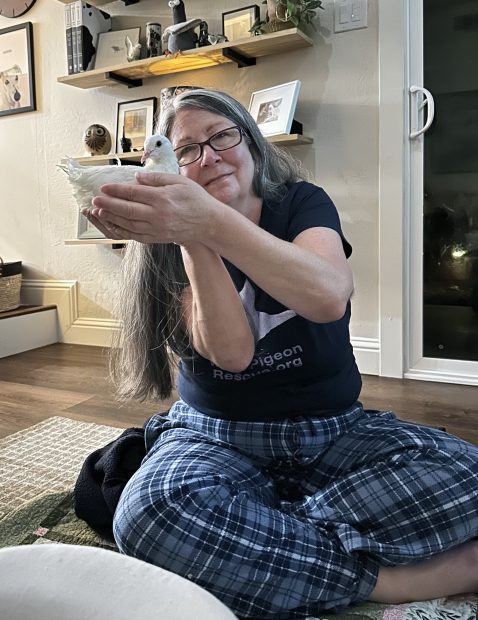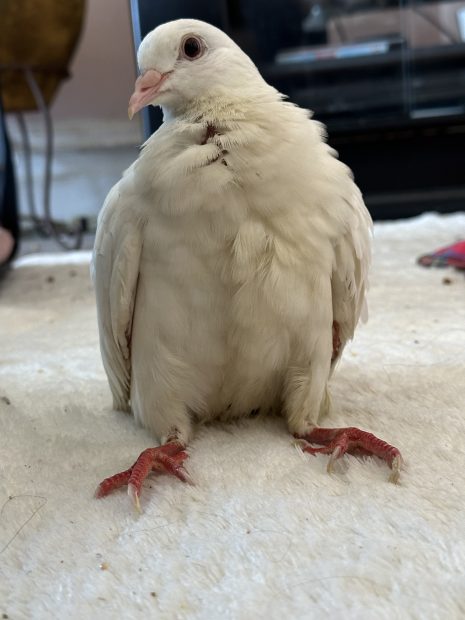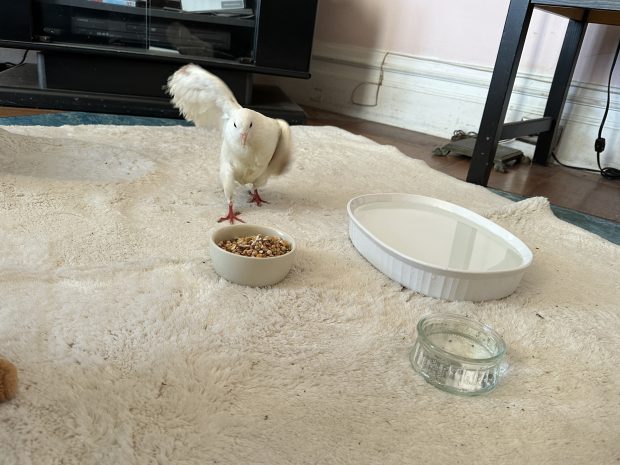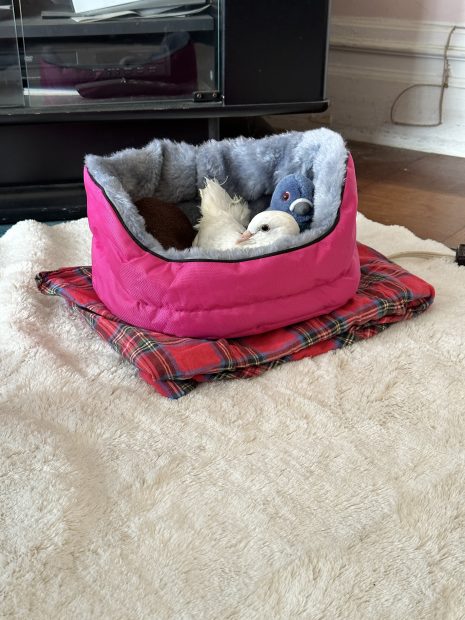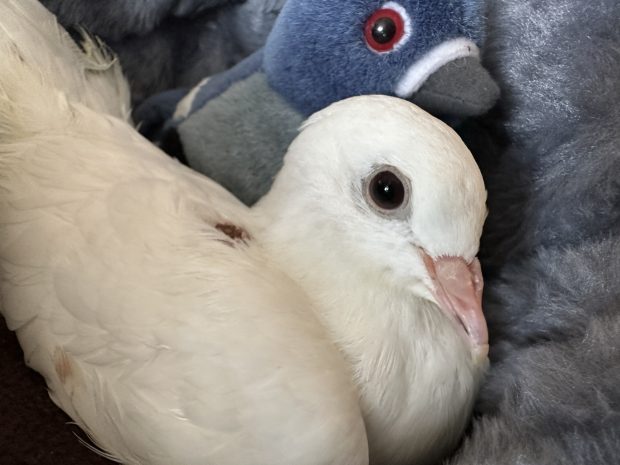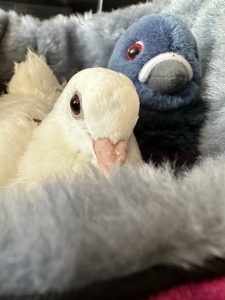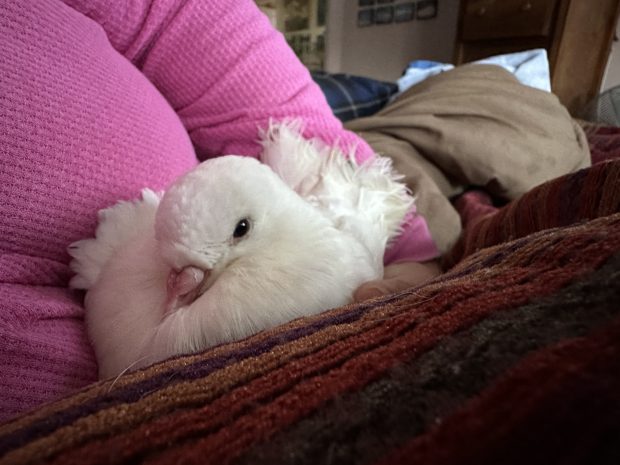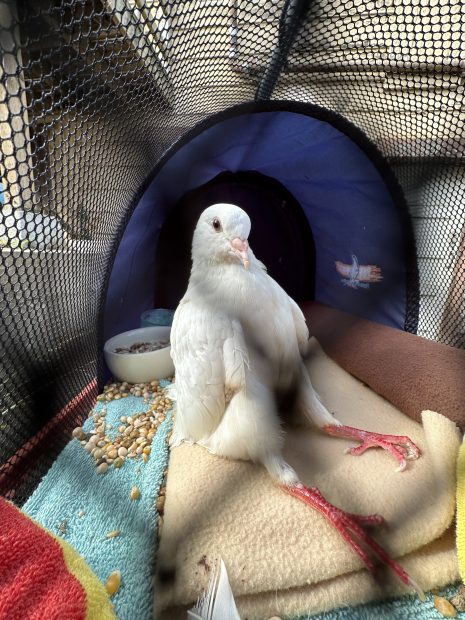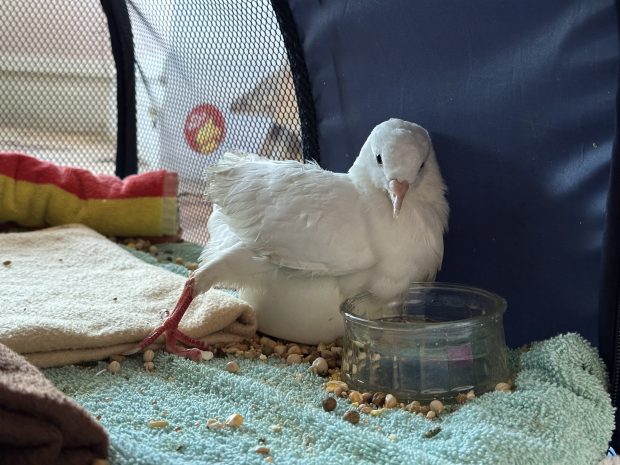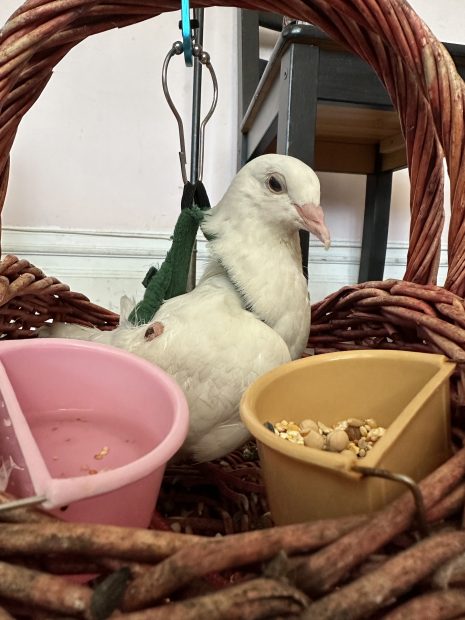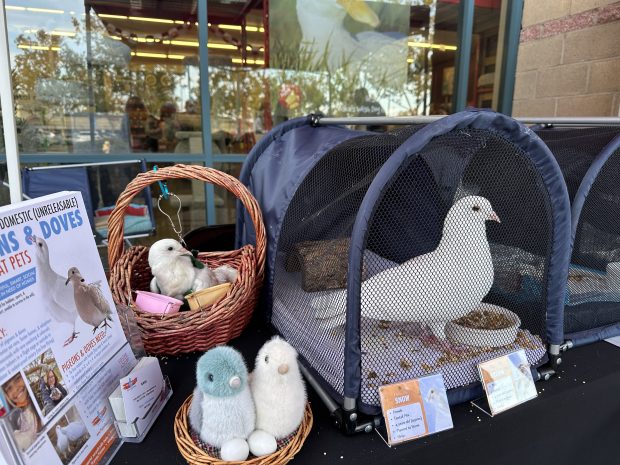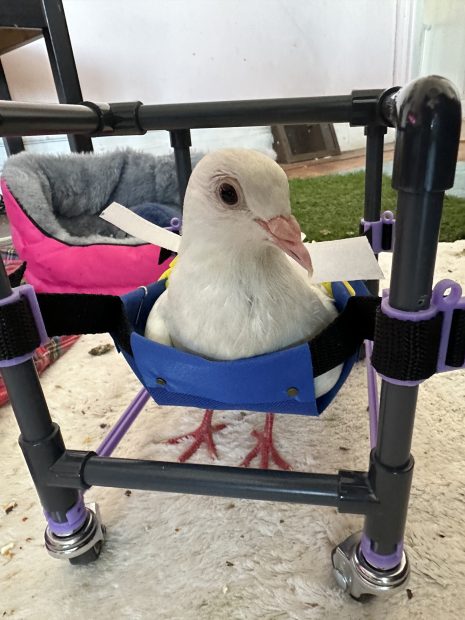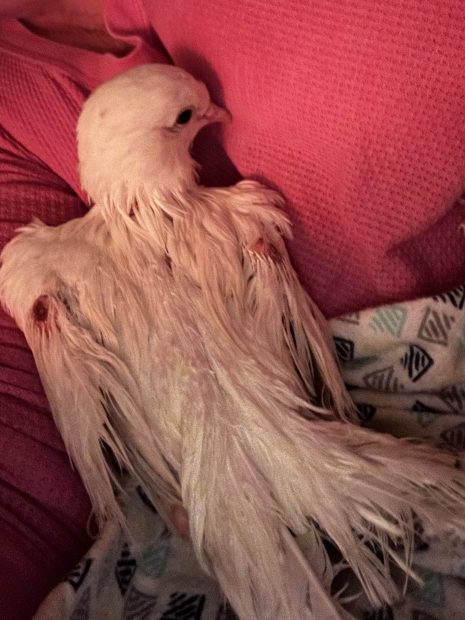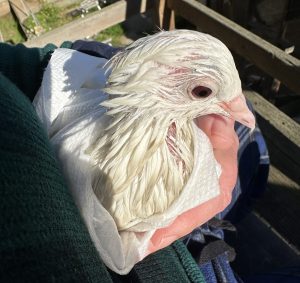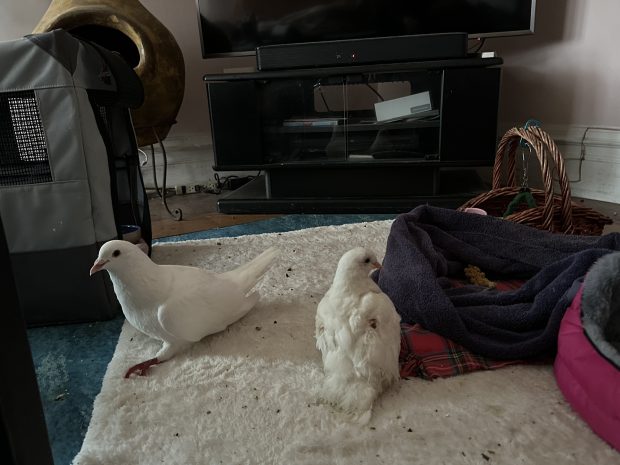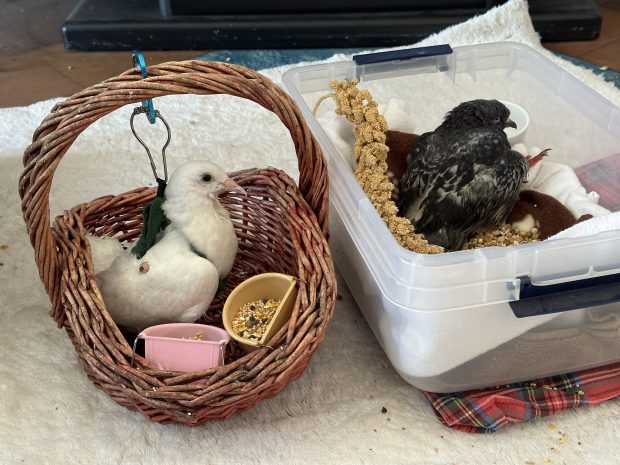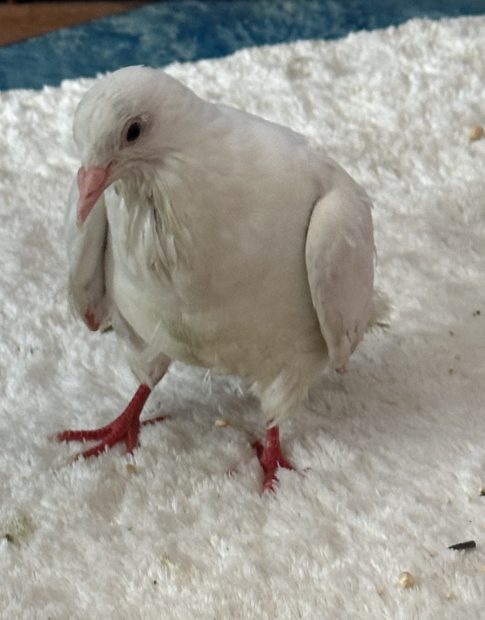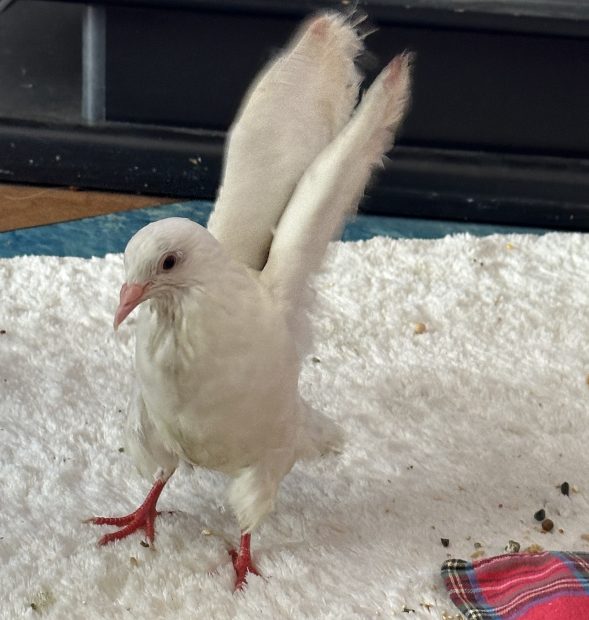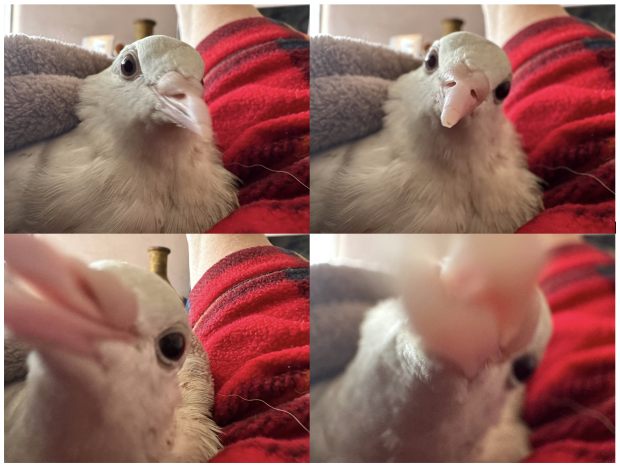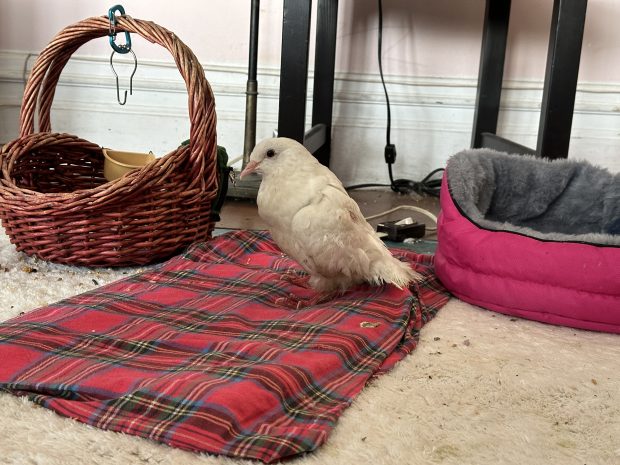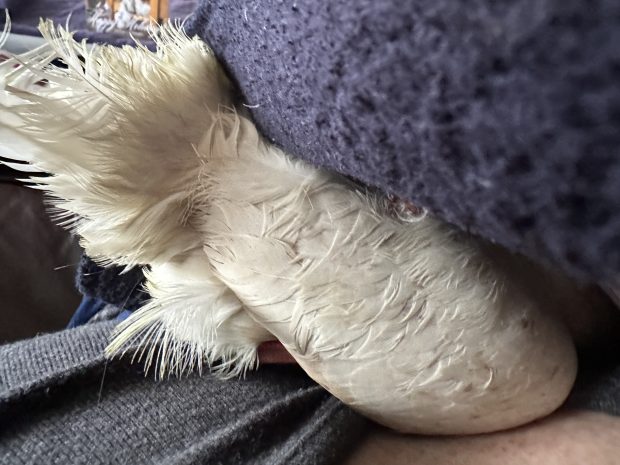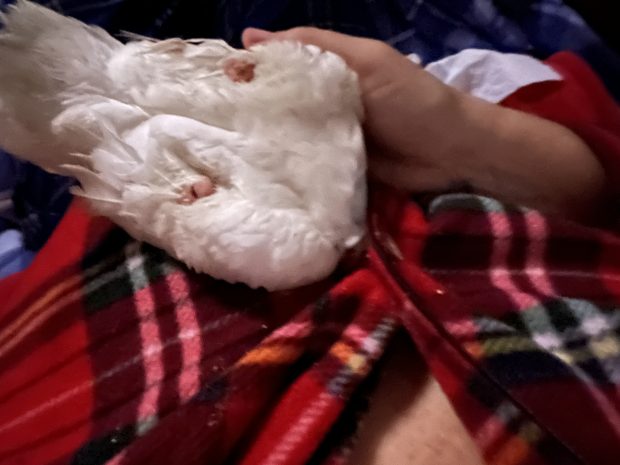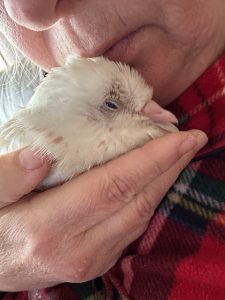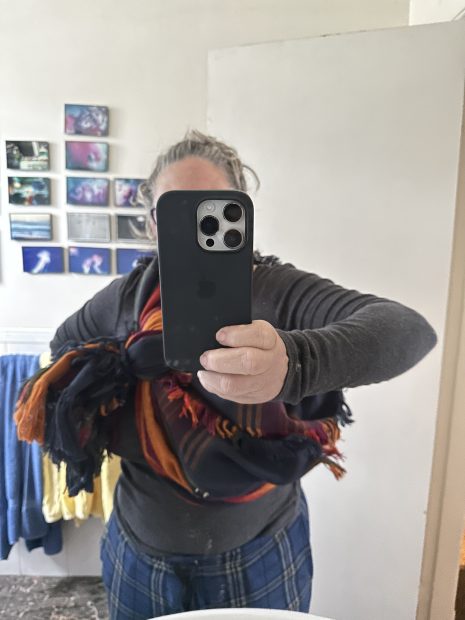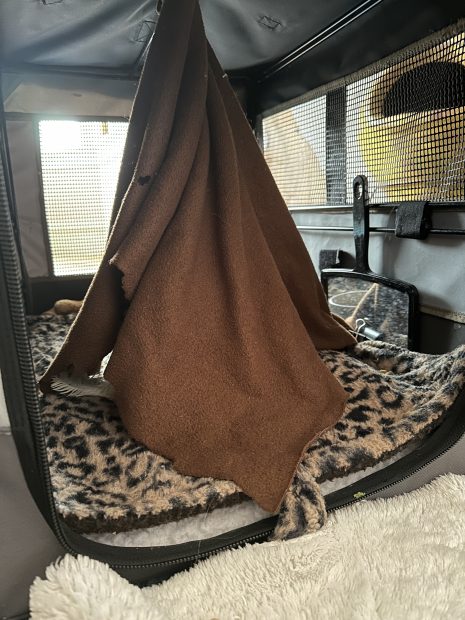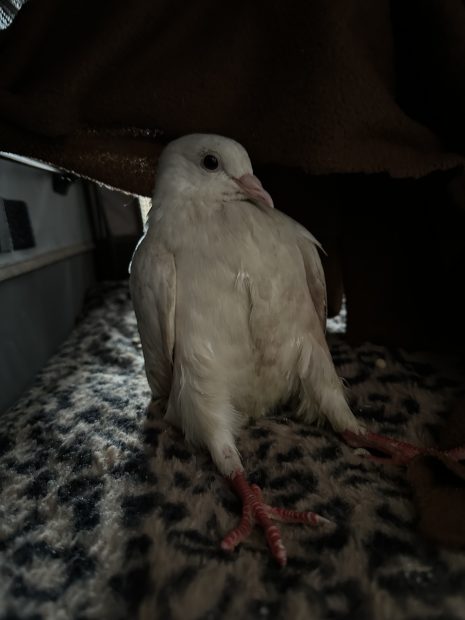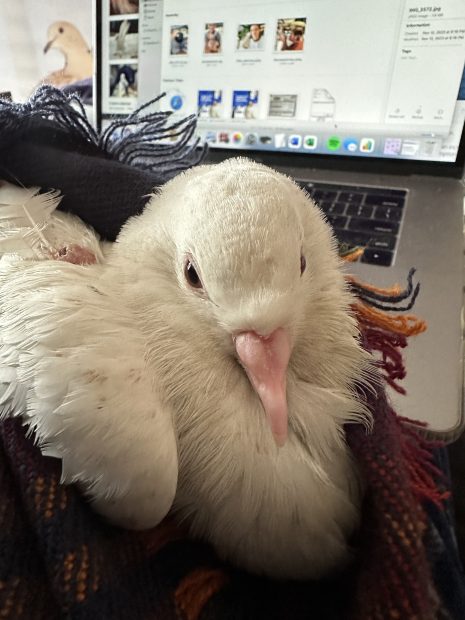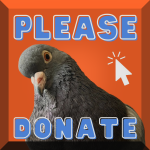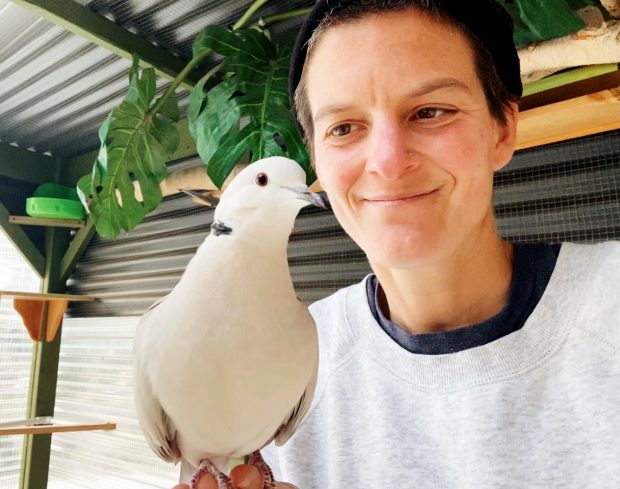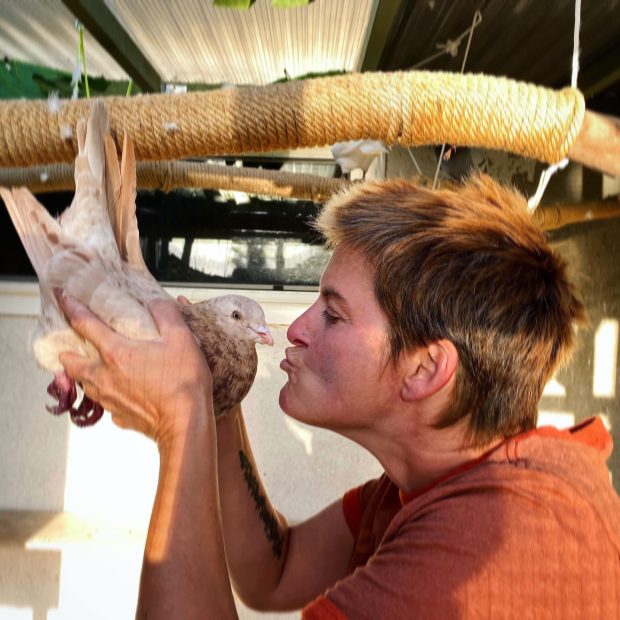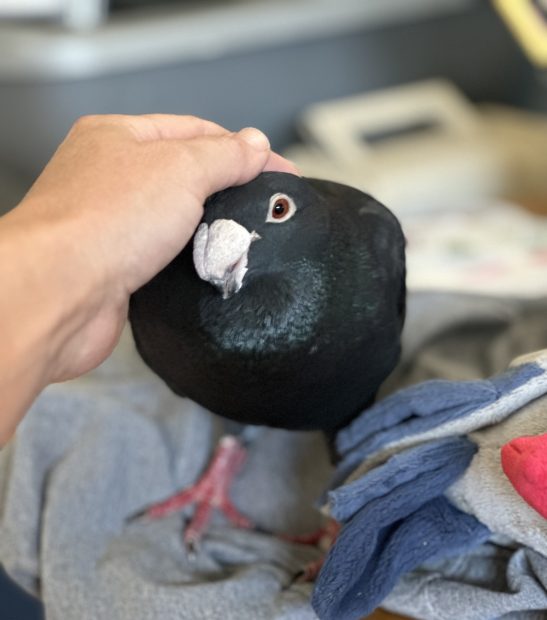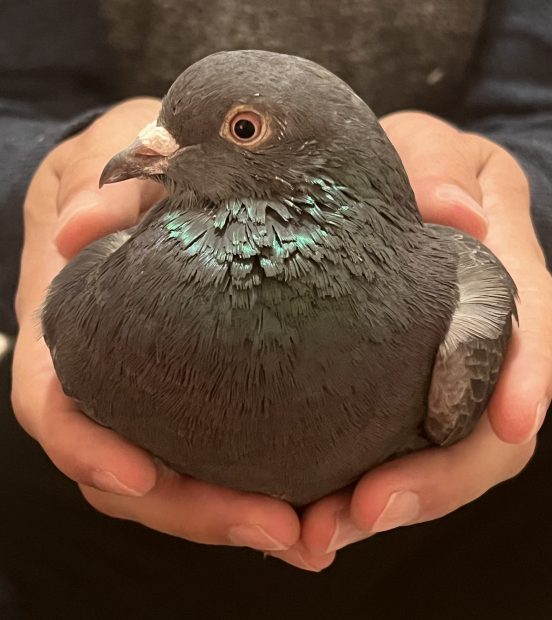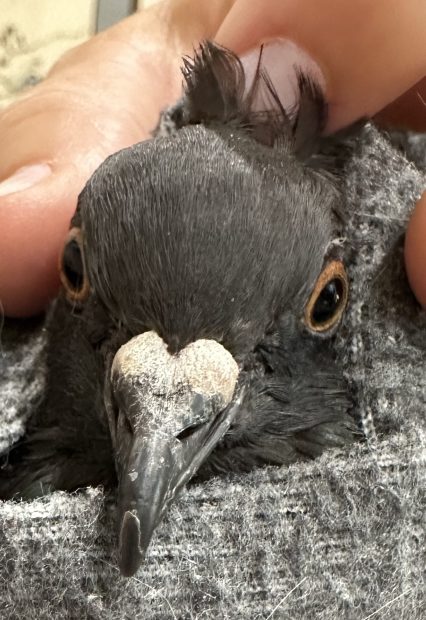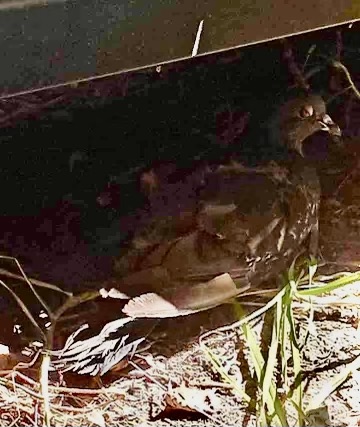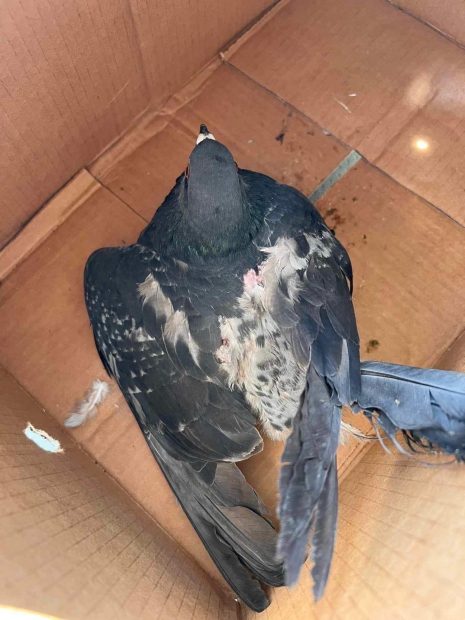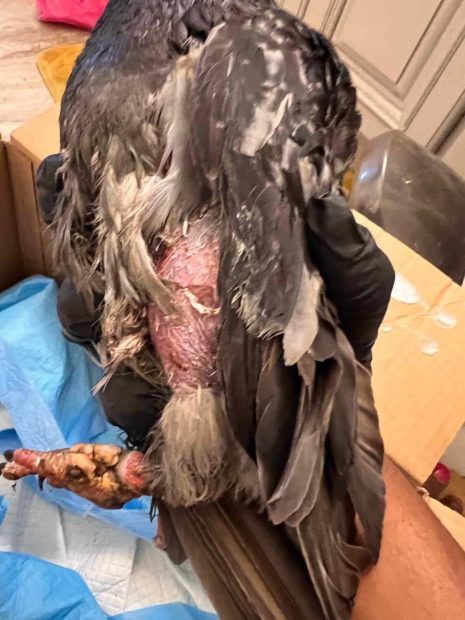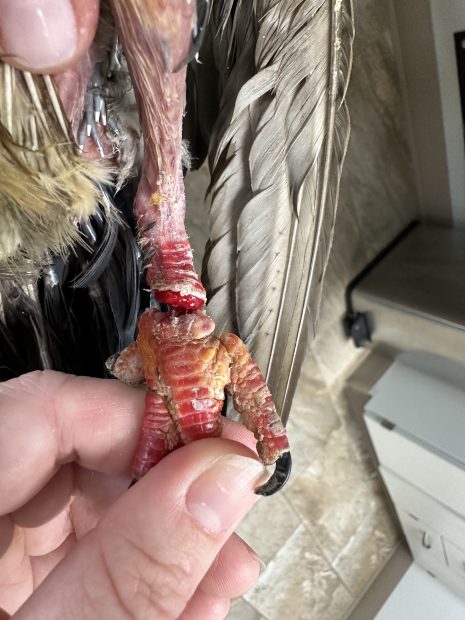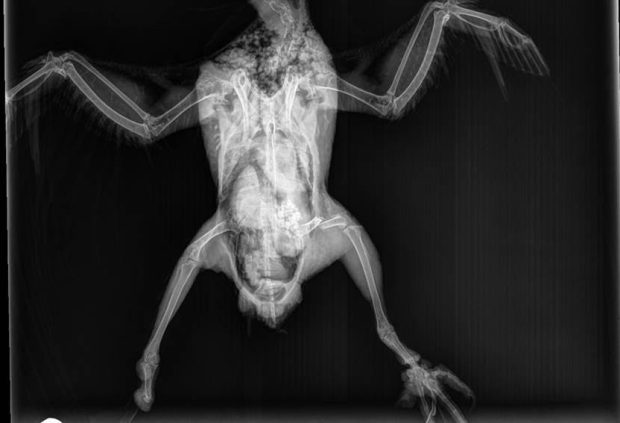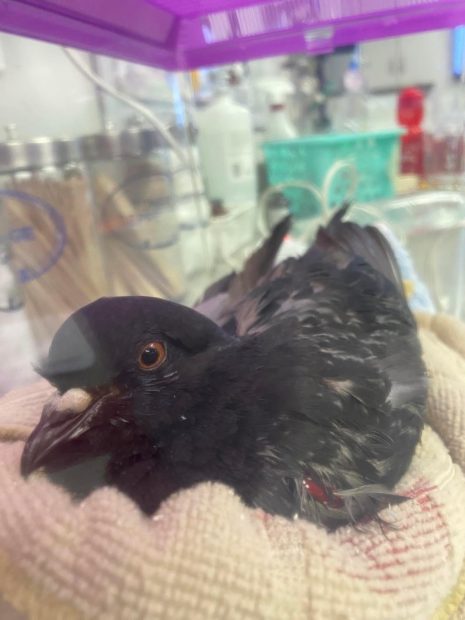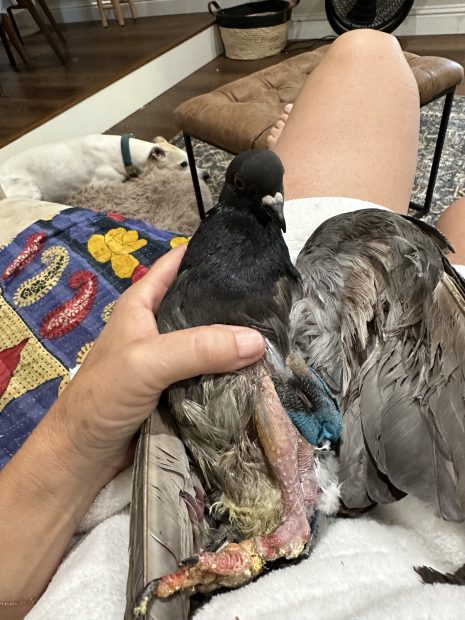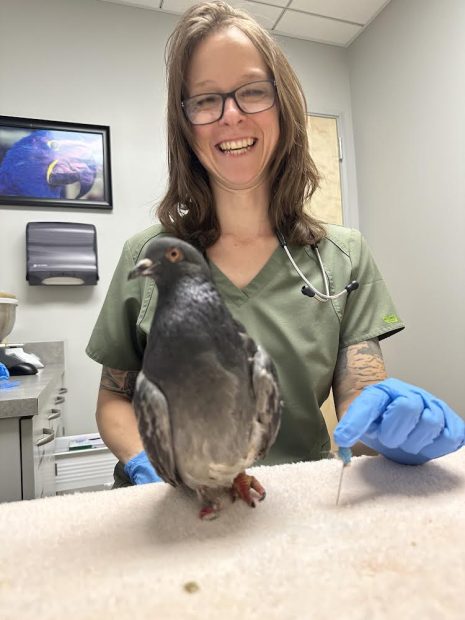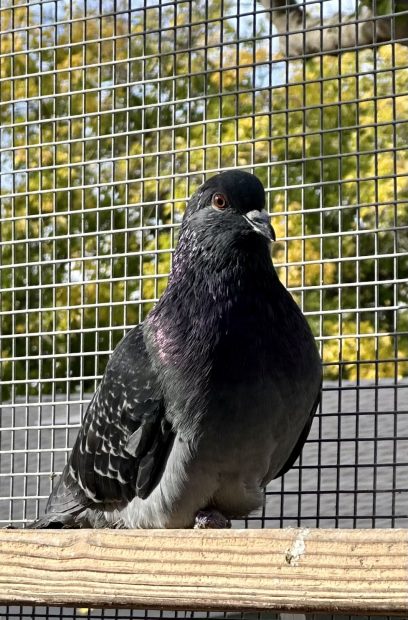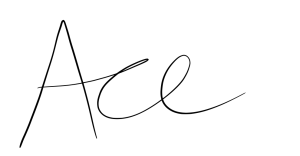“Pigeons can ber very polarizing, but it’s very heartening how many people love pigeons, and see them as a symbol of resiliency, a symbol of beauty in an urban environment.”
-Chava Sonnier, Great Lakes Pigeon Rescue
When Susan Jicha greets guests at her Uptown home, her pets like to make introductions. Her dog, Rosie, shakes her tail at the door and her bird, Kahlo, wobbles from underneath the television stand to perch on her hand.
Kahlo is happy and independent, the 68-year-old retired teacher said. Her assertion that he’s the most photographed bird on the North Side rings true as he stretches his neck as if he were posing. By all accounts, he’s “living the good life.”
But Kahlo’s life wasn’t always so easy. He’s not the type of bird many people would probably think of as a pet. He’s not a parakeet or a parrot. Kahlo, with his gray feathers tinged purple and blue in patches, is a pigeon.
About four years ago, Jicha adopted him from a rescue organization in the Fox Valley. Kahlo nearly starved, Jicha said, because his previous owner didn’t realize he was blind — likely from brain damage due to a collision. He eventually learned to eat again through training with a bell.
“Somebody said, ‘Can you take him’ and I said, ‘Sure.’ I thought it was temporary, and I’ve had him ever since,” Jicha jokes as Kahlo makes cooing sounds.
While pigeons are often looked down upon for drab coloring and messy pooping habits — notoriously at the CTA’s Irving Park Blue Line Station — the birds have enjoyed somewhat of a renaissance online recently. Video after video labels them “unjustly hated” and “underrated,” sentiments Chicago-area pigeon owners and enthusiasts agree with.
‘Permanent’ Illinois residents
Pigeons have a lengthy history in Chicago, according to John Bates, the curator of birds at the Field Museum, which has an exhibit on pigeons. While some pigeons have bright, eye-catching feathers — the Victoria crowned pigeon with signature white tips in the New Guinea region, for example — the ones Chicagoans are probably most familiar with are the domestic rock pigeons, sometimes called rock doves. They’re even considered “permanent residents” in Illinois.
Domestic pigeons originated in the ancient civilizations of Central and Western Asia and were brought to Europe in pre-Roman times, Bates said. The earliest known reference to one was in an Egyptian pharaoh’s menu. They eventually became “commensal” with humans, gaining access to food and nesting spots. They were transported to the United States in the 1600s, likely for food, and spread throughout North America, Bates said.
“With any kind of bird, in the right situation, if they’re a captive species and they can get out into the wild, they’ll start reproducing,” Bates said. “If there are no predators, the populations will increase.”
Rock pigeons’ ancestors inhabited — as the name suggests — rocky places, laying eggs on ledges of cliffs. Window ledges and bridge beams now serve as artificial counterparts. The pigeons roaming city streets or on farms today are considered “feral,” not “wild,” because they still depend on humans for food, Bates noted.
As for how many feral pigeons live in Chicago, or even North America, Bates said it’s anyone’s guess. Many amateur bird-watchers don’t bother to track them, he said. Their nickname “rats with wings” might be considered derogatory, but, like rats, Bates said pigeons thrive largely because of their ability to adapt. They’re able to survive when temperatures dip well below zero, for example.
“For better or worse, they’re not going anywhere,” Bates said.
But that doesn’t mean their life in Chicago is carefree. Chava Sonnier, the president of Great Lakes Pigeon Rescue, founded the organization in 2018 after noticing a lack of available care for pigeons in Illinois. Wildlife rescues won’t take in domestic birds, but domestic bird rescues are often only equipped to care for parrots, Sonnier said.
The rescue process is fairly straightforward, Sonnier said. People report that there’s a pigeon in need of rescue through the group’s social media accounts or by phone. Some are injured feral pigeons, others are ones that were raised domestically. Sonnier compared the latter to a puppy who’s never been outside.
“They’ll walk right up to people, or they’ll come up to a building and perch by the door — basically just wait for help,” she said.
These pigeons also don’t have any concept of a predator — namely hawks or peregrine falcons, Sonnier said. Recently she said employees at an oil change shop on the Northwest Side noticed a hawk tussling with a large, white domestic king pigeon. The pigeon ran up to the manager, essentially begging for help. The manager saw the bird was bleeding, and contacted the rescue, she said.
A team of volunteers then work to safely contain the pigeons and provide them with medical care, before placing them at the rescue organization’s main facility in Maple Park or with one of about 20 to 30 foster homes in the Chicago area.
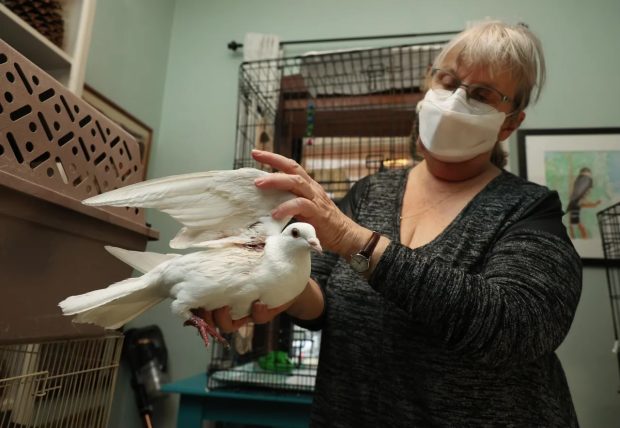
(John J. Kim/Chicago Tribune)
In 2023, Sonnier said the organization placed almost 400 pigeons in adoptive homes across the country. When well cared for as pets they can live an average of 16 years, compared with three years on the streets, she said.
“Pigeons can be very polarizing, but it’s very heartening how many people love pigeons, and see them as a symbol of resiliency, a symbol of beauty in an urban environment or having compassion for the underdog — or underbird so to speak,” she said.
‘Meticulously’ clean birds
Jicha provides one of these waystations for area pigeons. While she only owns one pigeon — Kahlo — she fosters about 30 pigeons throughout the year, sometimes as many as 10 at once. During a visit earlier this month, she had seven birds in her care.
Wearing a graphic T-shirt fittingly adorned with a pigeon wearing headphones, she pointed out various aspects of her study-turned-pigeon room. Cages filled with toys and rainbow-colored perches for the pigeons to rest on line the walls.
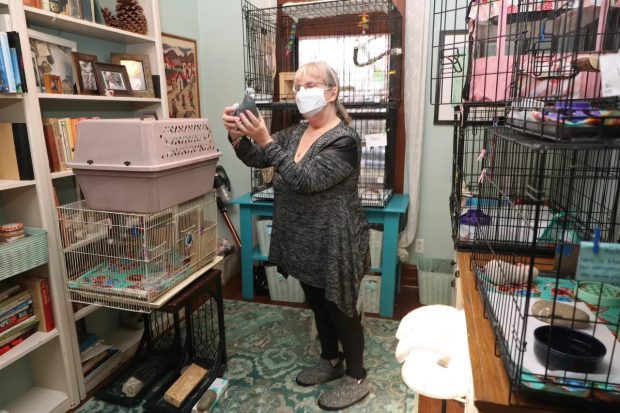
Susan Jicha takres a rescued pigeon named Greta out of its cage at her home in the Uptown neighborhood in Chicago. Jicha is one of the founding members of Great Lake Pigeon Rescue. (John J. Kim/Chicago Tribune)
She gave medication to a feral pigeon to help ease its pain and swelling from a broken wing, and decided it was time to let Wilma, who Jicha believes has a heart condition, out of her cage. Jicha, who is quite neat, doesn’t want pigeon poop on her floors, so she looked over her rows of bird diapers that she purchases from an online boutique to select the correct size for Wilma.
Contrary to popular belief, Sonnier said pigeons are “meticulously clean birds.” She said they’ll even bathe twice a day if they’re provided with clean water.
“If given the choice to live in a clean environment, they are fastidious about where they poop,” she said. “They’ll do anything they can to avoid pooping in their nest or wherever they sleep.”
Despite having to invest heavily in cleaning wipes, Jicha said pigeons have helped provide companionship after her husband passed away in 2012. An avid bird-watcher, Jicha said she got involved in pigeon rescue after dozens of white pigeons were dumped in a parking lot at the corner of Wilson and Ravenswood avenues about six years ago. She quickly realized how “remarkable” they are, and said she hasn’t looked back since.
“It’s a great thing to know you are providing comfort and alleviating suffering,” she said.
Pigeon racing
Many of the birds Jicha fosters are former racing pigeons, including Gandalf. Gandalf, who was rescued after a call from a doorman in Streeterville, is one of her most social birds, Jicha said. She said it almost looks like he’s dancing in his cage.
“I always get choked up when I talk about (pigeon racing),” she said. “I’ve had them die of starvation in my arms.”
Pigeons are known for their “homing” ability, which basically means they can return to their original location over large distances. Soldiers used this ability during World War I and World War II to carry messages. It also allows specially trained pigeons to race, a controversial sport among animal rights groups.
Annette Prince, the director of Chicago Bird Collision Monitors, said they get at least 40 calls per year related to pigeon racing. These birds often have colored bands on their legs, but many are active enough to evade capture, she said.
“Certain seasons of the year when there’s races going on, we get call after call on some days,” she said.
Chicago’s City Council outlawed homing pigeons in residential areas in 2004 following complaints of messiness from residents. Violating the ordinance could result in a fine of $100 up to $1,000. Kirsten Cabanban, a spokesperson with the city’s Department of Law, said it’s unlikely it would be enforced against people who have pet pigeons or foster them through rescue organizations.
One of the Great Lakes Pigeon Rescue’s requirements to adopt or foster a pigeon in the city is approval from a landlord or property owner, Sonnier said.
Sonnier, who is a full-time nurse, has nine pigeons of her own in Washington, D.C. She said she even converted her husband into a pigeon fan. She jokes that she sometimes asks him if he would have imagined having a house full of pigeons 20 years ago.
Pigeons are emotionally intelligent, playful and overall “amazing,” Sonnier said. She’s pleased that the tide might be changing on their poor reputation.
“Pigeons are not living in cities because they colonized us as aliens. You see pigeons in urban environments because they literally have no way of surviving other than to follow people around,” she said. “People are the reason they’re here, so we have an obligation to care for them.”
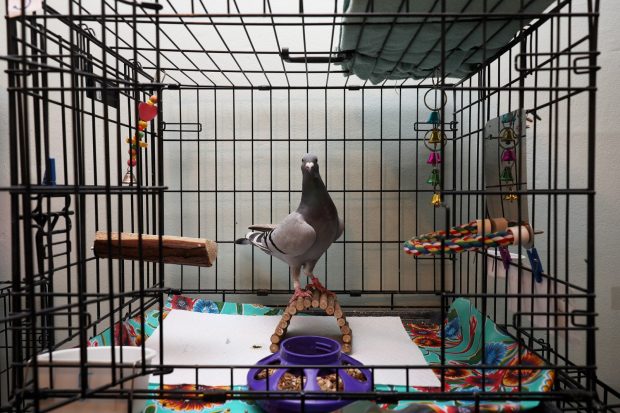
A rescued pigeon named Wilma rests in a cage at Susan Jicha’s Uptown home on Feb. 7, 2024, in Chicago. Jicha is one of the founding members of Great Lakes Pigeon Rescue and currently has seven pigeons under her care at home. (John J. Kim/Chicago Tribune)
rjohnson@chicagotribune.com

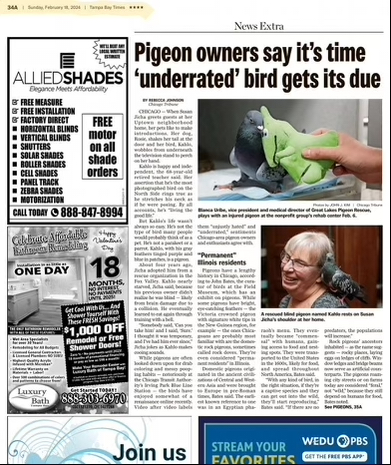
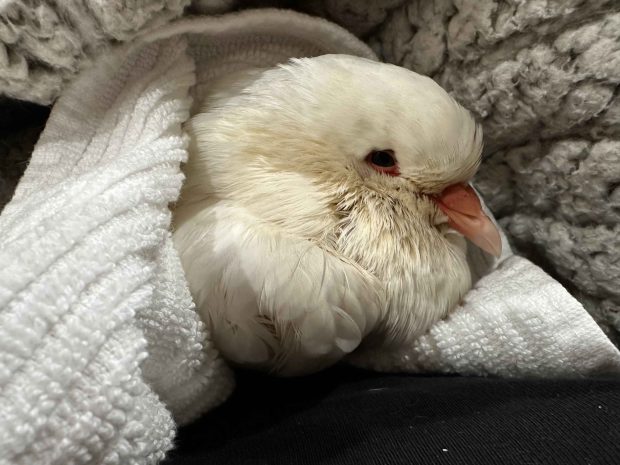
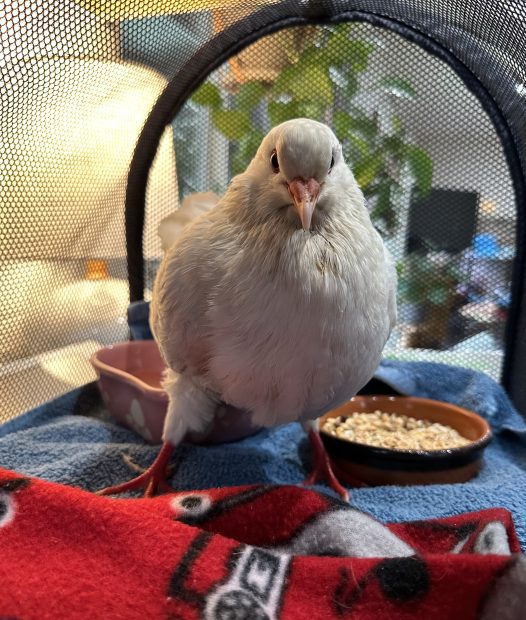

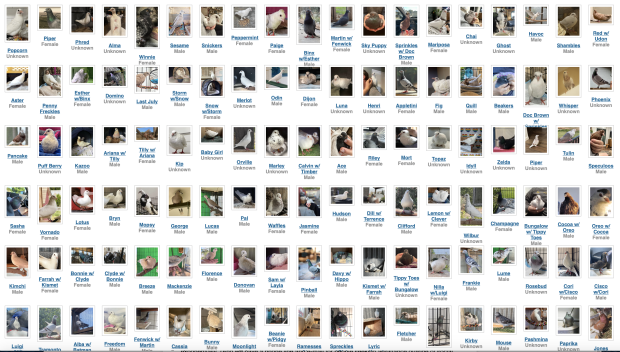

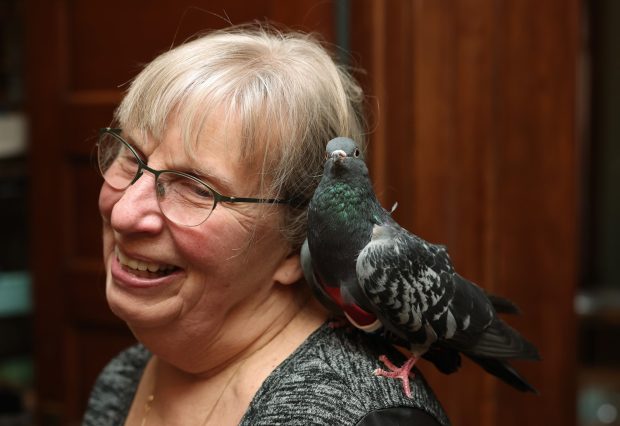





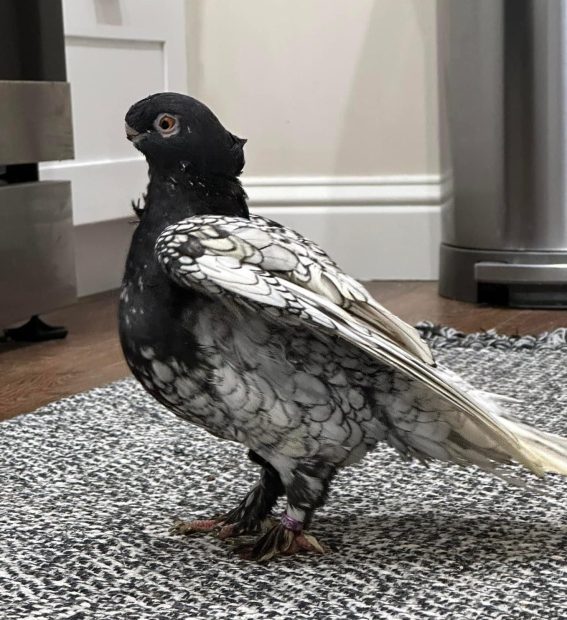
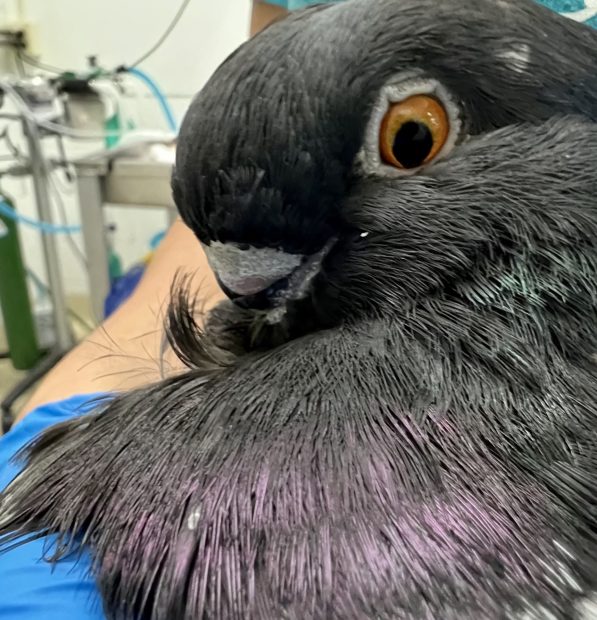
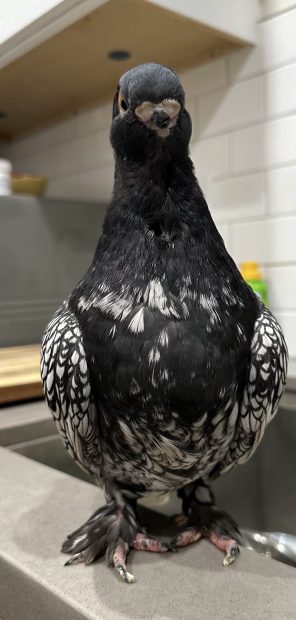
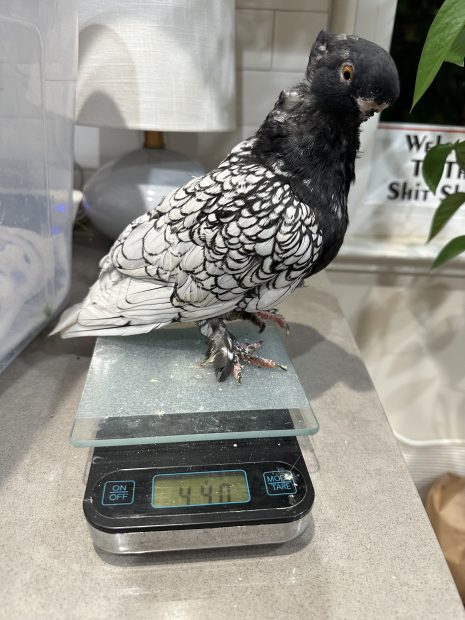
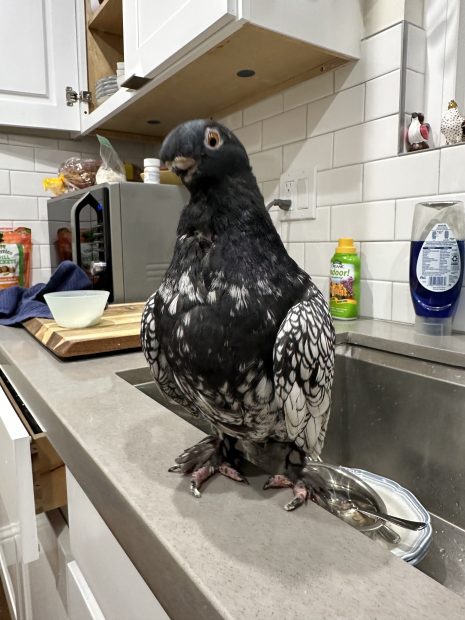
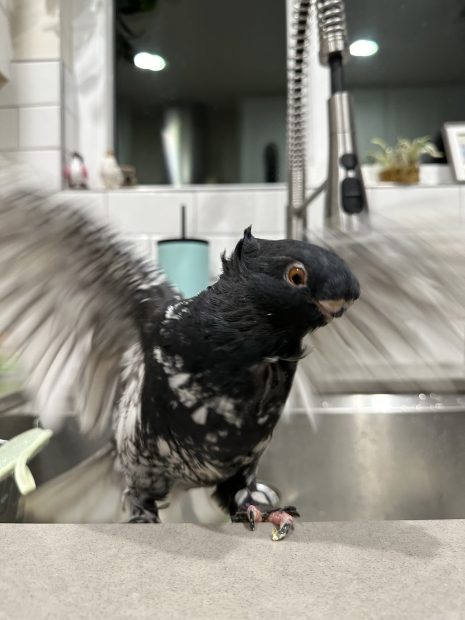
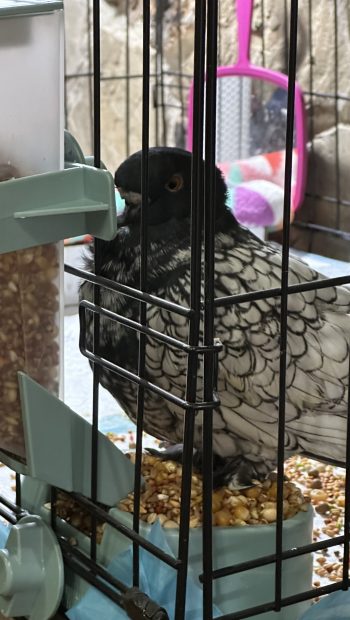
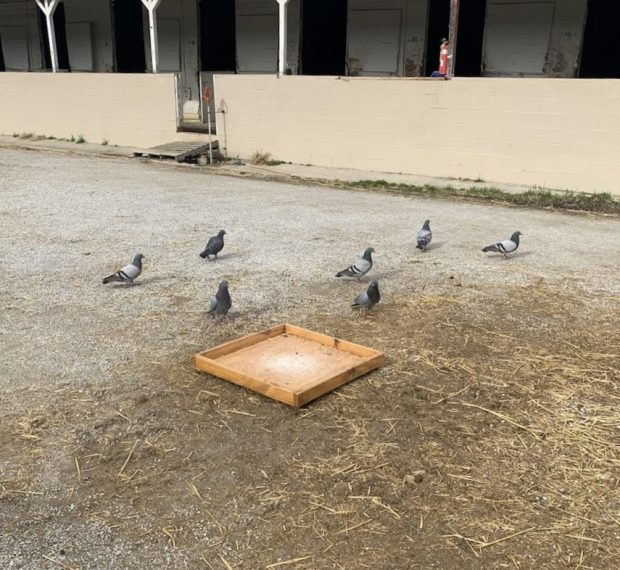
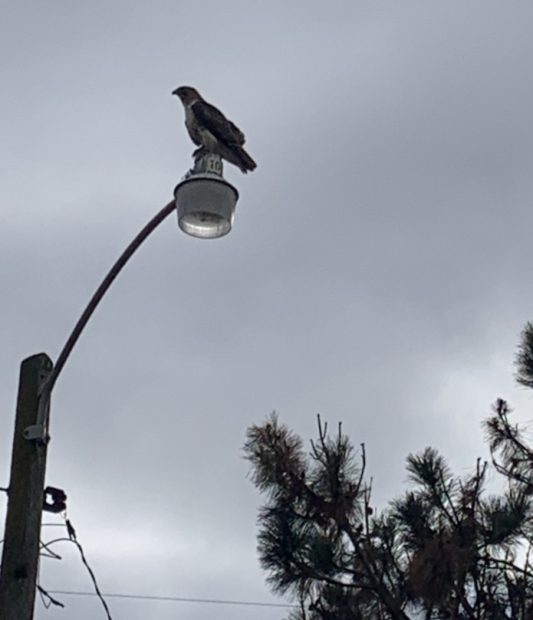

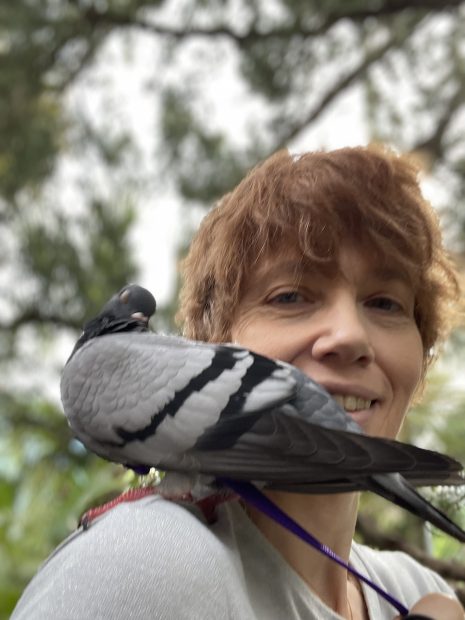
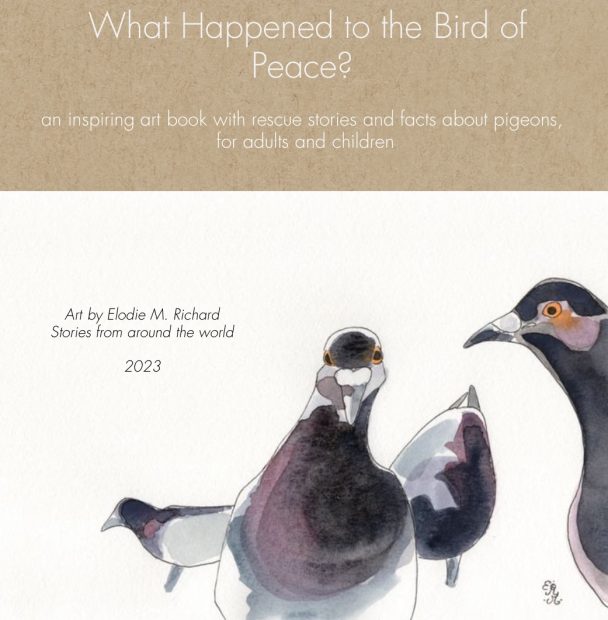
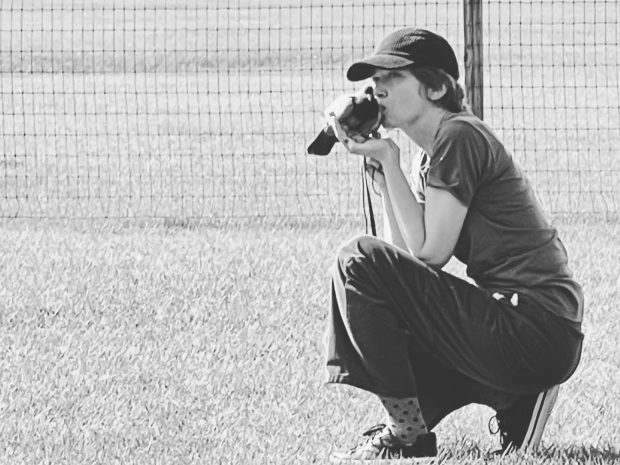
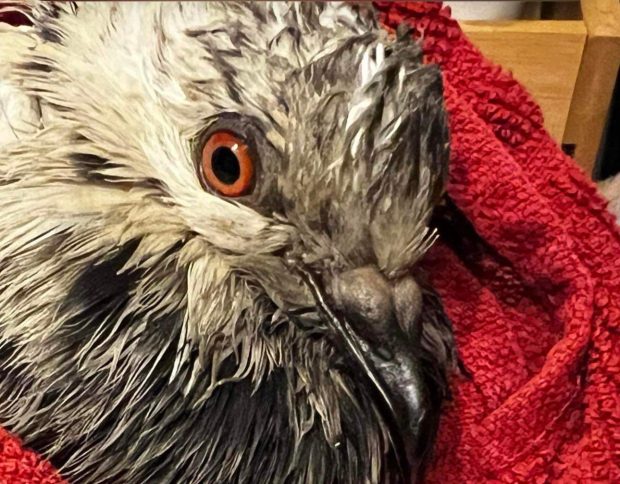
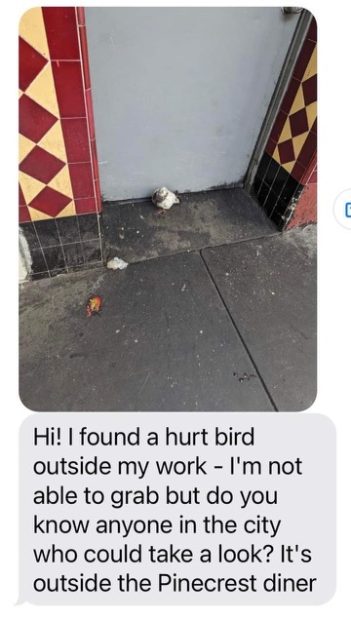
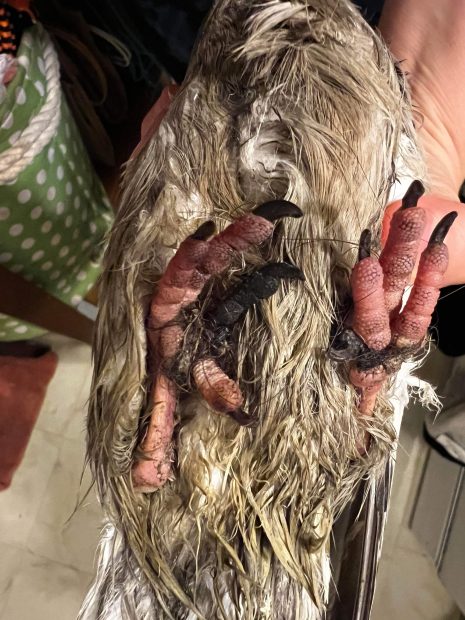
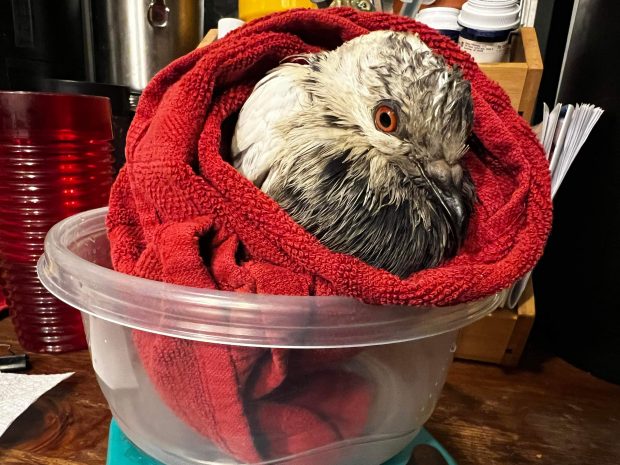
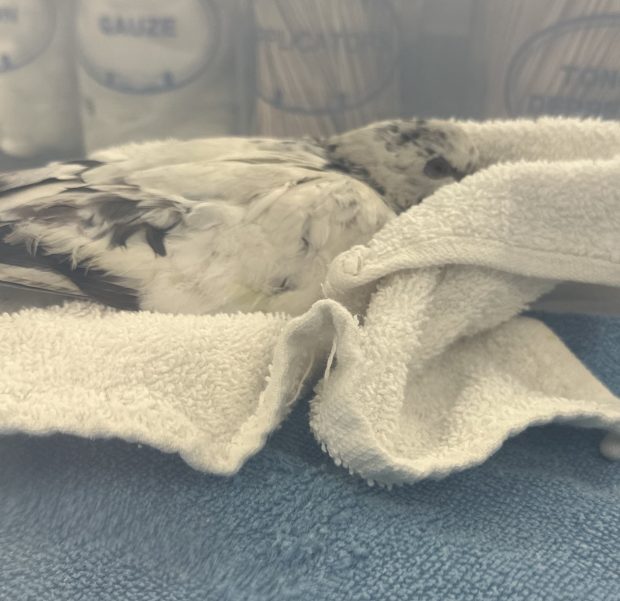
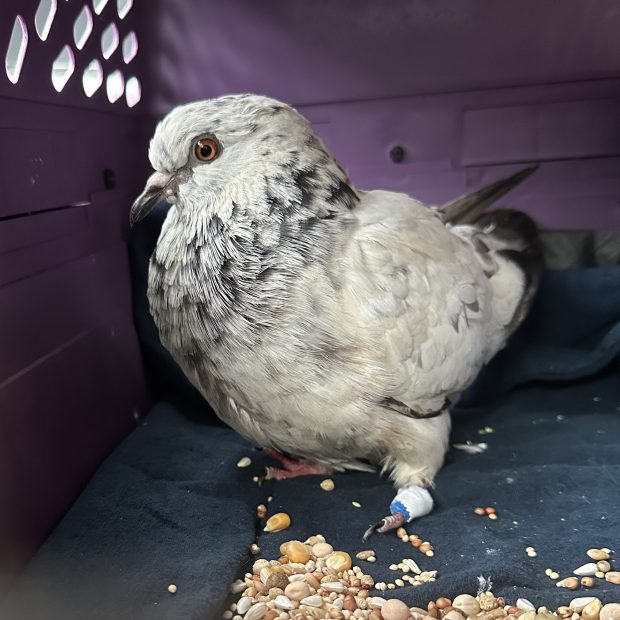
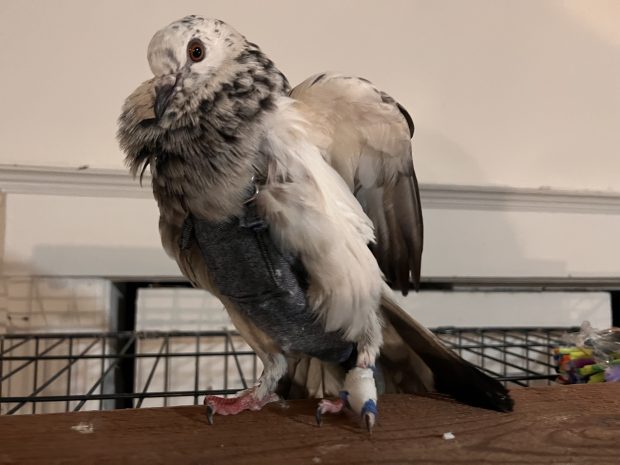
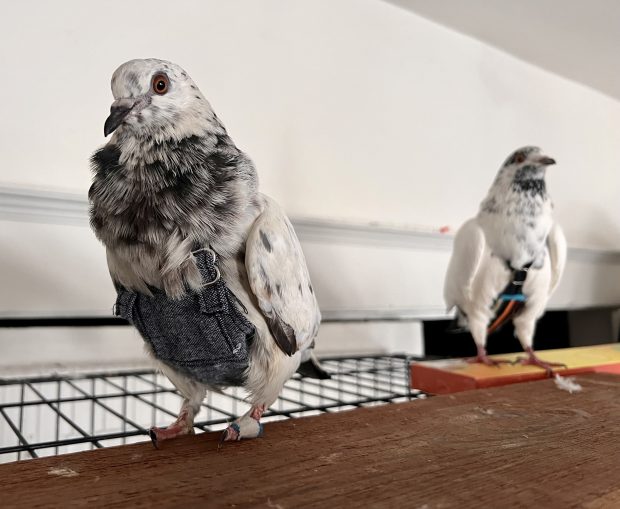
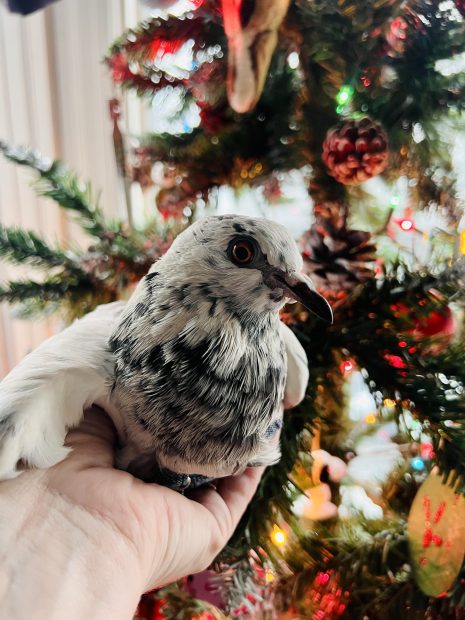
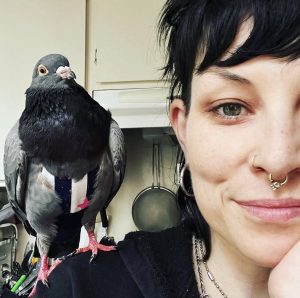 Dion, an artist by nature and a long-time bartender by trade, had always been interested in helping animals but never quite found a way to invest in the pursuit… until the Covid pandemic stopped the world and everything changed. One single pigeon rescue turned into many, and after making a few trips to WildCare with injured city pigeons, Dion resolved to find a new career helping animals. In the past four years, Dion has helped with the rescue, rehabilitation, release, and placement of hundreds of injured and orphaned pigeons. She volunteers with Palomacy as a Facebook Help Group Moderator, a Hotline Operator, and Rescue Volunteer. She currently works at WildCare’s pigeon-friendly Wildlife Center as the Social Media & Hotline Manager and lives in beautifully foggy San Francisco with her husband and son—who both help with pigeon rescue in every way they can—and an always fluctuating number of rescue animals, including Pickles the Pigeon.
Dion, an artist by nature and a long-time bartender by trade, had always been interested in helping animals but never quite found a way to invest in the pursuit… until the Covid pandemic stopped the world and everything changed. One single pigeon rescue turned into many, and after making a few trips to WildCare with injured city pigeons, Dion resolved to find a new career helping animals. In the past four years, Dion has helped with the rescue, rehabilitation, release, and placement of hundreds of injured and orphaned pigeons. She volunteers with Palomacy as a Facebook Help Group Moderator, a Hotline Operator, and Rescue Volunteer. She currently works at WildCare’s pigeon-friendly Wildlife Center as the Social Media & Hotline Manager and lives in beautifully foggy San Francisco with her husband and son—who both help with pigeon rescue in every way they can—and an always fluctuating number of rescue animals, including Pickles the Pigeon. 